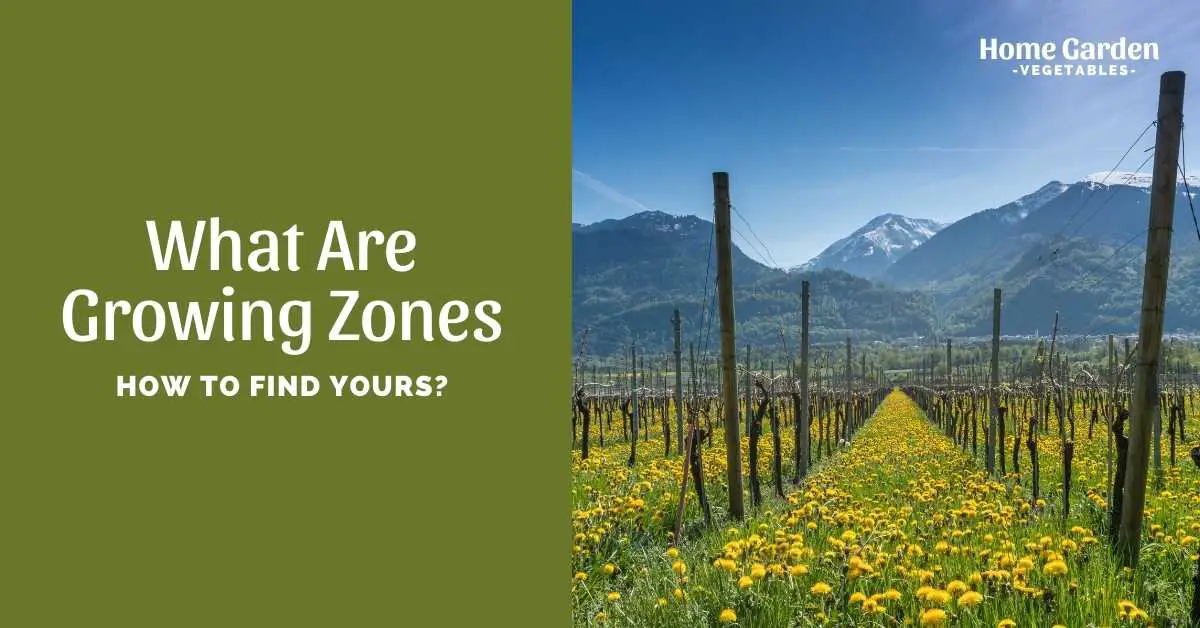When shopping for plants, you’ll often come across the term “growing zone,” or “planting zone,” or “hardiness zone.” What do they mean, and what does it have to do with selecting plants for your yard? As it turns out, it has everything to do with your gardening success!
When preparing a garden and picking new plants to adorn it, some prior knowledge about growing zones is essential. Only once you’re sure about your growing zone, you’ll be able to tell which plants will work well in your garden and which won’t.
Reader Poll: What online courses would interest you?

If you’re not sure about what gardening zones are and how to know which gardening zone you live in, this post will help you. Read on, and you’ll learn what are growing zones to make the right decisions when choosing which plants to add to your landscape.
What Are Growing Zones?
Starting with the most pressing question at hand, what are growing zones, and why do we need them?
Growing zones are developed to help gardeners and landscapers understand which plants are suited to the different kinds of climates. More specifically, planting zones identify the plant species that can survive the winters in a particular region or zone.
Subscribe to our newsletter!
Each planting zone is a geographical location that holds certain climatic traits relevant to a plant’s survival and growth. The different zones are identified by a growing zone map, which divides a piece of land with respect to the kind of plants suited to growing there.
What Are The Different Standards?
Different regions in the world have their own standards. The most popular one, which you may already have come across at some point, is called the USDA scale. Other standards include American Horticultural Society (AHS) heat zones, Australian Hardiness Zones, and Canada’s Plant Hardiness Zones. You’ll be using the standard according to the region you live in. Once you’ve identified your specific growing zone, you’ll select the plants that are suited for that zone.
The USDA Growing Zones

Though it’s not the only plant hardiness zone system on the planet, it’s definitely the first one to be developed and the most widely used to this day.
The USDA Hardiness Zone Map covers all of the United States and much of Canada. It divides the region into 13 zones, each zone covering a 10-degree range for the average minimum winter temperatures. Zone 1 is the coldest and is located to the northern end of the map, with average minimum winter temperatures ranging from -60°F to -50°F. Zone 13 is the hottest, situated on the southern end, and experiences average minimum winter temperatures ranging from 60°F to 70°F.
What Are Sub-Zones In The USDA Hardiness Zone Map
Each zone in the USDA planting zone map is further divided into 2 sub-zones, a and b. The average annual minimum winter temperatures of a single sub-zone lie in a 5-degree Fahrenheit range. For example, zone 13a has minimum temperatures in the range 60°F to 65°F, while zone 13b has minimum temperatures in the range of 65°F to 70°F.
How To Find Your Planting Zone
For those living in the United States, you can find your planting zone by visiting the USDA’s official page for hardiness zones. You can either click on your state on the map to view its zones or find your state from the drop-down menu above the map on the same page.
How To Use Your Planting Zone

Once you’ve found your growing zone, it’s easy to pick the right plants for your garden. It’s not a guarantee for a plant’s success since other factors, like watering, sunlight, and feeding, are also involved. However, it does give a fair idea of which plants are hardy enough to survive winters in your region.
The growing zone comes in handy when choosing perennial plants since they need to live through the winters to be able to survive beyond a single growing season. For example, a plant labeled for zone 10 won’t be able to make it through the cold climate of zone 3. However, if the plant is suited to growing in zone 7 and you want to plant it in zone 6, you’ll likely be able to pull it off with some added winter protection.
Microclimates Within A Growing Zone

Hardiness zone maps are not the absolute judge of whether or not a plant will survive in a region. Microclimates can exist within a growing zone, with slight variations in climate than the average calculated for that specific zone. If you live in a microclimate, slightly different rules may apply to determine the success or failure of a plant species.
There can be different reasons for the existence of microclimates. A nearby water body, structures, fences, surrounding vegetation, or soil type may cause minor variations in the climate of the region. Valleys are generally a few degrees colder than the surrounding hilltops since they tend to trap cold air. Though small, these variations can play a significant role in deciding the fate of a plant.
Experienced gardeners often create microclimates to grow plants that are not originally suited to their zone. Shady areas, raised beds, barriers, and other factors can slightly change the climate within your backyard and make it possible to grow plants that won’t naturally thrive there.
Conclusion
So you have the answer to what are growing zones. It’s about time you find yours and only choose perennials that are labeled for your zone. Plants that are suited to your climate will thrive with little care, keeping your garden adorned for at least a couple of years. If you’re ready to take on a bit of a challenge, you may even try creating microclimates to plant unusual species.

